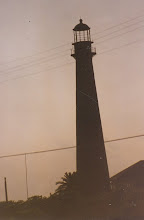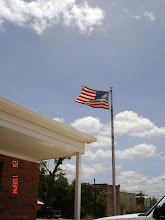 Lunch Time on Grandma's Back Porch 8.5" x 11" pencil
Lunch Time on Grandma's Back Porch 8.5" x 11" pencilMy grandson and I were making grilled cheese sandwiches and tomato soup for lunch the other day. I have him help me whenever possible. Not only does it pass on skills, but it also gives us some time to talk and share. I remember spending a lot of time with great-aunts, grandmothers, neighbors, talking as they went about their chores, and picking up their tricks in, not only keeping house, but in living.
One of my favorite places was the wooden kitchen step stool that most women seemed to have in their kitchens. I grew up on those stools and, no matter how old I got, it was the place to sit and gossip and learn. I still have my great-aunt's kitchen stool. My grandmother's stool, which was identical, is still in the family. Mine isn't in the kitchen, as it needs some work after a move in which it lost the steps. But my kitchen does have stools at the island, where my grandsons and I have shared many lunches, breakfasts, making things, painting, doing projects, and even doing a bit of sculpture with clay!
As we made our sandwiches and soup, I remembered lunch time at my grandmother's house. I sat on the stool while Grandma and the maid/cook hurried to get cleaning done and dinner (remember, this is Texas, where we have breakfast, dinner, afternoon lunch or a party, supper, and a snack before bedtime, or while visiting on the front porch.) on the table for when the men came home from the dry goods store at noon. Not only did she have me to feed, and the men, but also people who came to the back steps to eat. There were the men who might be working in the yard, or working cattle in the back pasture. And there were the hoboes who came from the trains, looking for a meal and any work they might find.
In my sketch above, I was remembering Grandma, wearing a dress and apron, her hair in waves as they wore in the 1920s and '30s. She had on "Old Lady Comforts", black oxford type shoes with a thick heel. (I have a pair of those like she wore, only mine were never worn. I don't know how they could call those comfort. Nothing comfortable about them. They're stiff, and can you imagine doing housework all day in those heels! Well, I had to wear higher heels when I started teaching in the late 1950s, and my feet were killing me!)
Grandma and the cook would make up servings of food in pie plates to serve to those who ate on the back steps. Whatever they had cooked for the family. It might be roast, mashed or sweet potatoes, gravy, green beans or English peas, canned pears or peaches, white bread or corn bread, some kind of dessert-pie, cake, or pudding, and iced tea or water with ice tinkling in it in hot weather, coffee if it happened to be cool that day. Sometimes she gave them a glass of milk.
I was picky and usually wouldn't eat. But Grandma got me to eat vegetable soup by playing with the alphabet in the soup. I had to spell something, then I had to eat what I spelled. All I wanted to eat was milk, fruit, and cereal. I'm still picky, but I do eat a few more things these days.
The men who were working outside would come to the porch for their dinner. Some would go out in the yard to eat, others would sit on the steps.
Hoboes would come to the steps, silent, but waiting for a plate of food. Some would ask if Grandma had any chores they could do, but most just were quiet, took their plate, sat on the steps, eating, then would leave their plate on the steps and go on their way.
I was warned to stay in the house, away from the porch and the men. I heard conversations that included the word "kidnapping", and I knew that my safety was of concern. I wanted to go up to the men and get them to talk, or to sing and dance and bring a smile to their sad faces. I loved to sing and dance, and entertain at the store, or anywhere I thought people would watch.
There were no chores that weren't already being done by local men and women, or by Grandma or the great-aunts, my mother, my uncles and great-uncles. Times were hard and people were still struggling to recover from the Great Depression. Hoboes "rode the rails", hitched a ride on the trains, and got off wherever they thought they could find a little work or food. Or maybe they just jumped off to avoid the law.
Grandma's house was a block from the railroad tracks, with a large home that had belonged to my great-grandfather on Railroad Street, and on the last railroad crossing. A field, often planted with tall corn, separated the two story house on Railroad Street, and Grandma's house. Great-Grandpa had died, so I guess there was no one there to provide a meal for the men passing through town.
Grandpa told me that there was a way the hoboes had of marking a house where they knew they would get food. He and I searched for any markings on the fence and around the house, but we couldn't find anything. Times were hard for him, too, and I'm sure he would have preferred to not spend so much on groceries every day. They cut corners, did without, and went through rationing, like everyone else, when we went to War. We never did find out how the men found their way from the railroad tracks to the back yard. But, they probably could see it from the train.
After all the men were fed, and things pretty well wound up in the kitchen, Grandma would sit down with me to eat while the cook took her food out on the porch where she talked with the men who were working outside. And I scooted out to the yard or the porch to play, when all the men had gone. When I was a child.
Before Grandma died, when she was in the hospital, she liked for me to feed her, so I tried to be there at noon, every time I could. By then, she had hardening of the arteries and was deaf, so we didn't get to have the tips on housekeeping and gossip. But I did play games with her, to get her to eat her food, just as she had done with me and the vegetable soup.
My drawing of Lunchtime at Grandma's House, shows Grandma serving the food, one worker in the yard, with a big straw hat, looking at the hobo reaching for a plate of food from the steps. Through the gate in the picket fence, two more hoboes are coming for their food. Smoke curls from the smokestack of the train about to pass through town. The two story house of my great-grandfather and the cottage he built behind it for his only daughter, are shown across the corn field. A catch pen for cattle takes up the back part of the corn field.
If I were to do this as a larger picture, I would turn it into a painting, and I would add myself, maybe peeking around a corner, the cook with more plates of food, and, perhaps, my grandfather, and other family members, coming home for dinner. Still, it probably has enough going on in the drawing.



















2 comments:
Hi Cecelia, hey, make sure you print each of these wonderful posts out to save for posterity. The internet is great, but I don't trust it when it comes to longevity. These are wonderful memories that you'll want to pass on to your grandkids, etc.
Thank you, Ciara. I appreciate your observations and comments. Saving things in more than one way is something I really need to work on, too.
Post a Comment